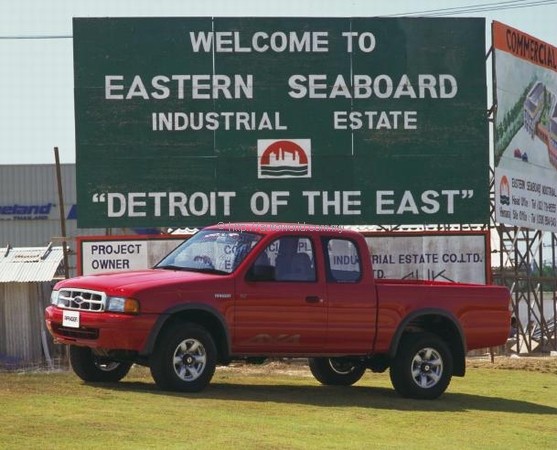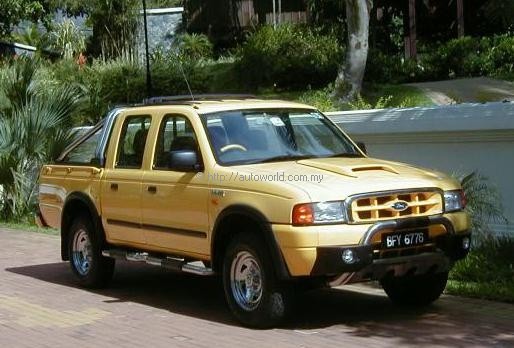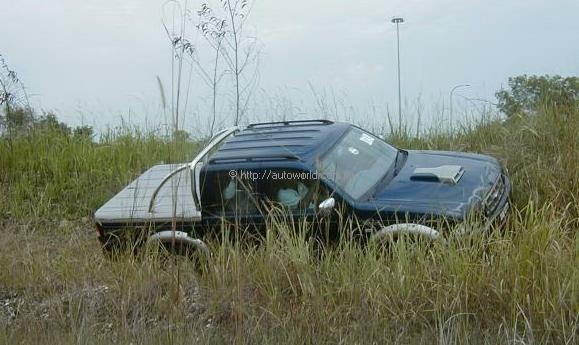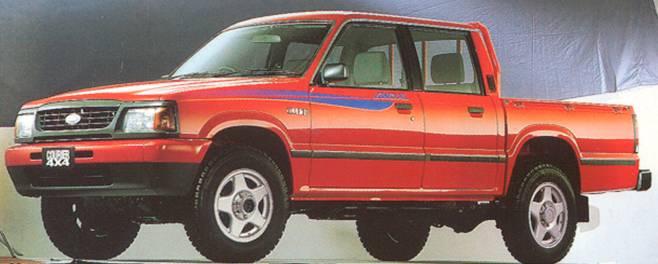The Ranger Story
Today’s substantial pick-up segment in the Malaysian market owes its growth to a Ford strategy for ASEAN in the mid-1990s. At that time, Toyota and Honda had conceived ‘Asian Cars’ – the Soluna and City, respectively – as low-priced sedans which were assumed to be what ASEAN markets needed at a time when Japanese models were getting too expensive in the mass market.
Low-priced sedans were one approach but Ford obviously had a different view. When asked if Ford would also develop an ‘Asian Car’, the response by a senior executive at that time was that the company did not think a sedan design was necessarily the only kind of vehicle consumers in the region needed.
Instead, Ford decided that a pick-up was an equally popular type of vehicle in ASEAN – and this was very clear in Thailand – and decided to develop a new world-class model. It had long experience in such vehicles since its F-Series trucks sold in North America had been the best-selling vehicles in the world for many years.
Following the company’s philosophy of building products (as well as sourcing) where the market is, Ford and its affiliate, Mazda Motor, spent a total of US$500 million to build a full-fledged factory in Thailand to build the new model. The 850,000 sq metres joint-venture manufacturing facility – Auto Alliance Thailand (AAT) – in Rayong on the eastern seaboard had a capacity of 135,000 units a year to start with because the intention was for it to become a global vehicle supplier.
Exports of the Ranger started in 1998 and before long, some 100 countries around the globe were getting Rangers from AAT. Besides fully-built units, AAT also exported Completely Knocked Down (CKD) kits to some countries such as Malaysia and the Philippines where local assembly would keep prices low as a result of more ‘favourable’ duties imposed.
However, before the Ranger arrived in Malaysia, it was preceded by the Courier in 1997. As luck would have it, local regulations changed whereby pick-ups with double cab designs could be registered for private use; until that year, a pick-up could only be registered by a company and used for business purposes.
Ford was the first to offer a pick-up oriented for personal use and promoted the Courier as a fun vehicle. It had bright colours and a special version known as the ‘Splash’ in bright yellow (yes, before the Ranger Splash, there was a Courier Splash) certainly changed people’s ideas about pick-ups being boring utility vehicles.
The Courier prepared the market for the Ranger which was launched in 1999. By then, Malaysians came to regard pick-ups as something cool to be seen in and liked the rugged image it had. The Ranger was designed with personal use in mind and had all the conveniences of a passenger car as well as a spacious cab. Also impressive was the 2.5-litre turbodiesel engine which was the most powerful in its class.
In its launch year, the Ranger was only on sale in the last quarter of the year and yet achieved a 21% share. The following year, sales crept up quickly as it became the pick-up that everyone wanted. Of the 7,269 pick-ups sold in 2000, 44% were Rangers, the market leader.
Without doubt, Ford Malaysia helped to develop the pick-up segment which, before the Ranger came along, had been around 1,800 units a year. In 2000, it was 7,269 units and in 2001, with the Mitsubishi Storm also in the market, the segment ballooned to 10,205 units – with the Ranger still holding market leadership. In the double cab market, the Ranger’s dominance was even more evident.
To add variety and more excitement to the model, a bright yellow ‘Splash’ version was introduced in 2000 (a black one was also added later) with extra accessories. In 2001 came the Ranger Extreme, a version unique to Malaysia which was specially developed by Ford Malaysia with an Australian design and engineering firm providing consultancy services. The Extreme was head-turning with its bold cosmetic add-ons and enhanced the Ranger’s image. The success of the Extreme caught the attention of Ford ASEAN which had its Vehicle Personalisation Team come out with a regional ‘accessorised’ version called the Hurricane in 2002.
All this while, the Ranger had dominated with only a manual transmission. The Mitsubishi Storm, which came into the market as the first pick-up with automatic transmission, revealed that there were many people who appreciated a pick-up with automatic transmission and it was very clear as 23% of pick-ups sold in 2001 had automatic transmission. Toyota has also noticed this niche and has joined in the game with a Hilux Automatic in recent times.
Ford had a Ranger Automatic in Thailand but this had a 2.9-litre non-turbo engine and no 4WD. It was not considered a suitable model for the Malaysian market, partly because the Ranger had established itself as a powerful pick-up and the displacement was also going to mean higher roadtax for owners.
Though Ford Malaysia’s official position was that ‘pick-ups with automatic transmission do not yet account for a significant market share’, it was clear that a Ranger Automatic was needed and it had to have a 2.5-litre engine and 4WD. However, the 1st generation Ranger was already reaching the end of its model life so as development work proceeded for the 2nd generation, provision was made for an automatic as part of the program.
The 2nd generation was launched in Thailand in July last year but at that time, the automatic was not available. The development work was almost finished but it was decided that the first country to get the new Ranger Automatic would be Malaysia, since the demand for this variant had begun here. Other ASEAN countries have not decided if they want this variant although they are watching how it fares in Malaysia, and Mazda did not get involved either as they didn’t see a need for such a variant in the Mazda Fighter range.
If the appeal of the Storm has been due to its automatic transmission, then it has a big fight on its hands in 2003 as the new Ranger Automatic – a more superior product in terms of specifications – makes its entry. Ford Malaysia expects to sell 4,000 units of the automatic alone (the manual will also be available), which is marginally more than all the Ranger manuals sold last year.


































